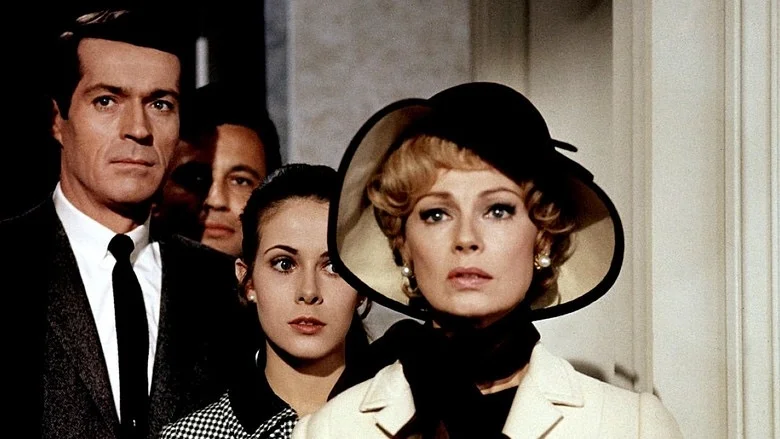Beginner's Guide to Alfred Hitchcock: The Trouble With Harry (1955)
Alfred Hitchcock’s sense of humor is very droll, and often pitch black; death can be funny, sex can be funny, and society can be funny. Almost all of Hitchcock’s films have a dry humor. Sometimes it’s an ironic juxtaposition that’s supposed to be funny. Even so, Hitchcock made few pure comedies especially after the silent era, To Catch a Thief for example can be called a comedy, and in 1941, Hitchcock made a screwball comedy Mr. and Mrs. Smith with Carole Lombard (that’s a strange movie). In 1955, the same year as To Catch a Thief, Hitchcock directed The Trouble with Harry, a darkly funny movie about a corpse with bad timing in Vermont.
A dead body turns up in the hills near a small town in Vermont. The titular corpse, “Harry,” was the estranged husband of Jennifer (Shirley MacLaine, in her debut film), and her son Arnie (future Leave It to Beaver star Jerry Mathers) shows her Harry and she’s quite delighted. Capt. Albert Wiles (Edmund Gwenn) thinks he killed Harry while out hunting. Spinster Miss Gravely (Mildred Natwick) believes she delivered a fatal blow to Harry when he mistakenly attacked her. Sam Marlowe (John Forsythe) is a struggling artist who just wants to help everyone figure out what happened. The trouble with Harry is that he’s dead. While nobody seems to care, they don’t know what to do with the corpse.
Based on the novel by Jack Trevor Story, the script by John Michael Hughes is witty, light, and delectable. Shot on location in Vermont, the film has a lovely autumnal look by cinematographer Robert Burks, with a warm and brisk feel, contrasting with the macabre humor within the picture. Hitchcock had to glue leaves on the trees, since the trees were almost bare when he started shooting in late September. He had also to shoot inside a gym for several scenes. Bernard Herrmann provided the score, his first for Hitchcock, and it’s a jovial, romantic score. The Trouble with Harry by all accounts was an easy shoot, with Hitchcock seeming to get along with his cast and crew and looked he back on the film with fondness.
This film relies on a single joke—that everyone is kind of indifferent to the dead man beyond that it’s annoying they have to deal with him. The characters are more concerned with their romantic misadventures than they are with the fact that a man is dead, as Hitchcock himself said he wanted to take a murder mystery out of the darkness and bring it into the daylight. This contrast is for me what makes this movie so funny. The joke that no one cares about Harry works every time. The film has several visual gags of people interacting with or not even noticing Harry. Hitchcock even has the characters bury and dig up Harry several times.
Hitchcock often liked to push boundaries when it came to sex and lust. Even The Trouble with Harry is somewhat transgressive. Miss Gravely is quite openly pursuing the Captain for a romantic—and sexual—relationship. Jenny and Sam’s flirtation has its share of innuendos. He even asks her directly to paint her nude, and she seems open to it. Jenny’s relationship to Harry could also be seen as abnormal and absurd. Other than sexuality, the film isn’t shy about bringing death and the grotesque into the normalcy of small town life.
While the film does have a sheriff called Calvin Wiggs (Royal Dano) who investigates the case, this isn’t a wrong man movie or even a serious murder mystery. The characters debate getting the police involved but they agree that it could be nuisance if they do. The picture does have characters acting outside the norm and trying to evade the authorities, even if they didn’t do anything wrong.
The Trouble with Harry is a morbid yet sweet comedy from the Master of Suspense, with performances that are wonderfully off-kilter for such lunatic characters. The visual design is inviting and quite unique for a Hitchcock film. While this entry in his filmography can seem minor, it’s interesting to watch the director play his hand at dark comedy. The Trouble with Harry is an oddball romantic-comedy, finding the humor in the inconvenience of dealing with a dead body.
















